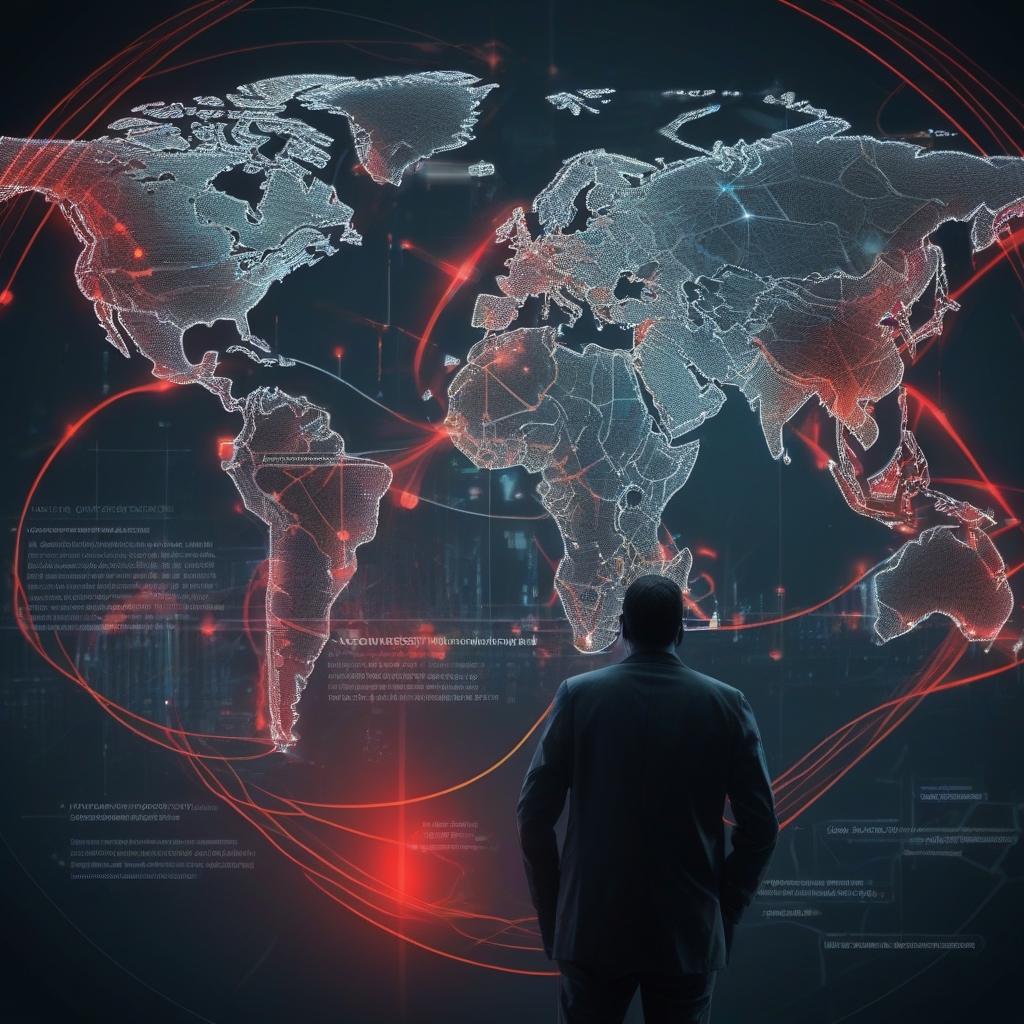In an increasingly interconnected world, cyber threats have become more sophisticated and devastating. As we enter 2024, the landscape of global ransomware is drastically evolving, with heightened concerns surrounding supply chain vulnerabilities and the emergence of AI-powered attacks. This comprehensive overview delves into these formidable challenges, providing critical insights into the ongoing battle against ransomware threats worldwide.
The Rising Tide of Ransomware Attacks
Ransomware attacks have surged over recent years, becoming a prominent threat to businesses and institutions globally. The pace of these attacks shows no sign of slowing down in 2024, as cybercriminals employ increasingly advanced tactics. Here are some key drivers:
- Increased Connectivity: As more devices are interconnected, the attack surface for ransomware has expanded significantly, making it easier for cybercriminals to infiltrate systems.
- Evolving Tactics: Attackers are continuously developing new methods to exploit vulnerabilities, making traditional security measures less effective.
- Profitable Returns: The high success rate and profitability of ransomware incentivize cybercriminals to persistently launch attacks.
Supply Chain: The Weakest Link?
Supply chain attacks have emerged as a worrying avenue for ransomware groups, posing substantial risks to businesses worldwide. The interconnected nature of modern supply chains means that a breach in one organization can have cascading effects on countless others. Recent studies highlight several factors contributing to this vulnerability:
- Error Prone Supply Chains: Complex supply chains with multiple third-party vendors provide ample opportunities for attackers to find and exploit weak links.
- Lack of Visibility: Organizations often lack comprehensive insight into their extended supply chains, leading to unknown vulnerabilities.
- Trust Assumptions: Companies often place too much trust in their partners’ security measures without proper verification.
Mitigating Supply Chain Risks
To combat supply chain vulnerabilities, organizations need to adopt a proactive approach, emphasizing:
- Rigorous Vendor Assessments: Conduct thorough security evaluations of all third-party vendors to identify potential weaknesses.
- Enhanced Contractual Obligations: Strengthen contracts to include comprehensive cybersecurity requirements and incident response plans.
- Continuous Monitoring: Implement solutions for real-time monitoring of supply chain activities to detect anomalies swiftly.
The Advent of AI-Powered Cyber Attacks
Artificial Intelligence (AI) has become a double-edged sword in the cybersecurity landscape. While it offers powerful tools for defense, it also enables cybercriminals to launch more sophisticated attacks. AI-enhanced ransomware is particularly concerning, manifesting in the following ways:
- Automated Targeting: AI algorithms can quickly analyze vast amounts of data to identify and prioritize high-value targets, launching precise attacks.
- Adaptive Malware: AI-driven malware can adapt its techniques mid-attack, bypassing traditional security defenses.
- Data Manipulation: AI can be used to manipulate data, creating more convincing phishing schemes and fake messages that are harder to detect.
Defending Against AI-Enhanced Attacks
As AI-based attacks rise, organizations must harness the power of AI in their defense strategies. Key defensive measures include:
- AI-Powered Threat Detection: Leverage AI to identify and counter sophisticated attack patterns more effectively.
- Behavioral Analytics: Utilize AI to monitor behavioral anomalies and detect signs of intrusions before they cause damage.
- Continuous Learning: Implement AI systems that learn from previous attacks to better predict and repel future threats.
Global Connectivity: Enhancing or Exposing?
The internet’s global reach, while beneficial, also presents significant cybersecurity challenges as organizations strive for international connectivity. With this connectivity, comes an increased vulnerability to ransomware attacks:
- Expanded Attack Vector: Greater connectivity means more points of entry for cyber attackers, complicating defense efforts.
- Shared Vulnerabilities: Shared systems and data across borders increase the risk of widespread attacks.
- Regulatory Challenges: Navigating diverse international cybersecurity regulations can hamper timely and effective threat responses.
Safeguarding a Connected World
Global organizations must adopt robust security measures to protect against ransomware attacks, including:
- Unified Security Frameworks: Implement cohesive security strategies that encompass all regions and systems.
- Cross-Border Collaboration: Foster collaboration between international entities to enhance threat intelligence and share best practices.
- Adherence to Global Standards: Align with international cybersecurity standards to ensure comprehensive protection.
Conclusion: The Urgent Need for Cyber Resilience
As we face increasing threats in 2024, organizations must acknowledge the urgency of strengthening their cyber resilience. By understanding the evolving nature of ransomware, addressing supply chain vulnerabilities, leveraging AI for defense, and safeguarding global connectivity, businesses can better protect themselves against these relentless cyber threats. The time to act is now; the digital guardianship of our interconnected world depends on it.

Leave a Reply